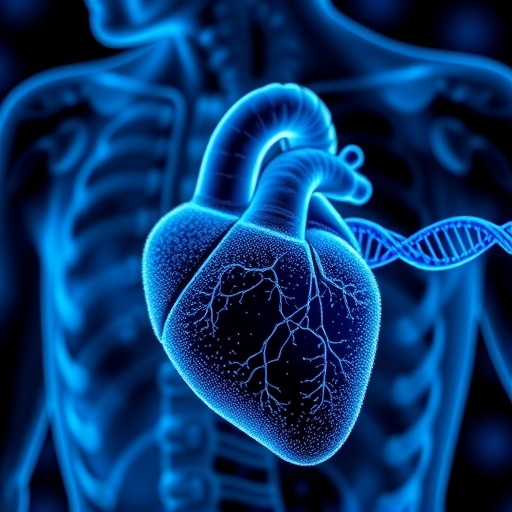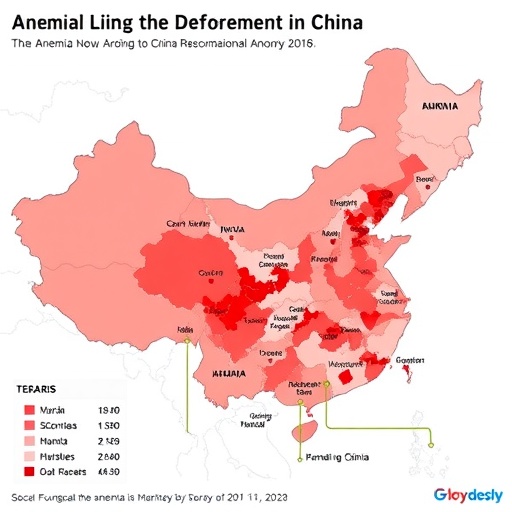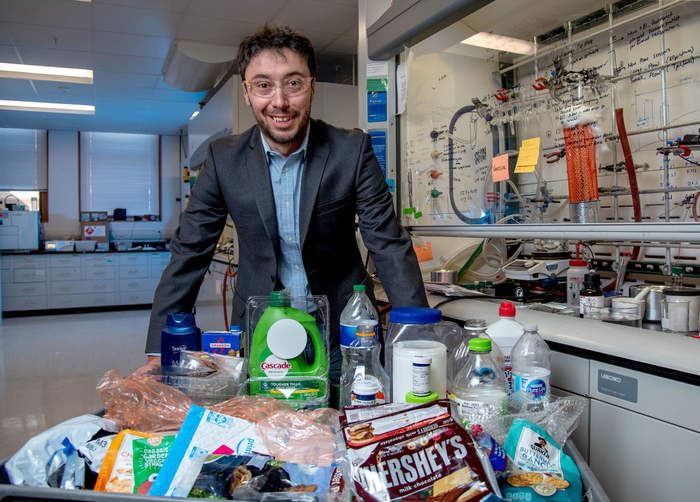In a groundbreaking study published in Nature, researchers have unraveled a profound link between maternal obesity and the early programming of liver disease in offspring, pinpointing a crucial molecular mechanism centered on Kupffer cells (KCs). Kupffer cells, the liver’s resident macrophages, play vital roles in maintaining hepatic homeostasis. This new research elucidates how maternal obesity disrupts their prenatal development through a hypoxia-inducible factor 1 alpha (HIF1α)-dependent pathway, ultimately predisposing offspring to fatty liver disease (FLD) in adulthood.
The team employed an elegant mouse model that selectively deletes the Hif1a gene in myeloid lineage cells—including Kupffer cells—using LysM-Cre mediated recombination, allowing them to investigate whether the prevention of HIF1α activity in embryonic macrophages could offset the damaging effects of maternal obesity. Their experiments focused predominantly on postnatal dietary influences following birth, as maternal diet during lactation was previously found to exert minimal impact on offspring liver phenotype.
Both wild-type and Hif1a conditional knockout mice subjected to a high-fat diet (HFD) after weaning gained comparable body weight and white adipose tissue mass, signifying that the ablation of HIF1α in myeloid cells does not interfere with the development of diet-induced obesity. However, the protective effects of deleting HIF1α in Kupffer cells illuminated a critical divergence in liver pathology between groups.
.adsslot_c3dpRhtJfq{ width:728px !important; height:90px !important; }
@media (max-width:1199px) { .adsslot_c3dpRhtJfq{ width:468px !important; height:60px !important; } }
@media (max-width:767px) { .adsslot_c3dpRhtJfq{ width:320px !important; height:50px !important; } }
ADVERTISEMENT
Detailed histological analysis using Oil Red O (ORO) staining revealed pronounced lipid accumulation in the livers of offspring born to obese mothers who had intact HIF1α expression. Lipidomic profiling corroborated these findings, demonstrating elevated levels of saturated triacylglycerols and cholesterol esters, hallmark features of FLD. Strikingly, offspring lacking Hif1a expression in their myeloid cells were markedly protected from developing this fatty liver phenotype, despite maternal obesity, underscoring the centrality of HIF1α-driven programming in predisposing to hepatic lipid overload.
To dissect the nature of HIF1α activation, researchers conducted transcriptomic analyses of Kupffer cells isolated immediately after birth (postnatal day 0, P0) from pups born to lean versus obese dams. These assays revealed 54 differentially expressed genes affiliated with a hypoxia response signature, implicating a hypoxic microenvironment or oxygen-sensing perturbations as triggers of HIF1α stabilization in liver macrophages. Among the upregulated genes were canonical HIF1α targets such as Hif3a, S100a8, S100a9, Tgfb3, and Vegfa, consolidating the mechanistic link between maternal obesity-induced hypoxia signaling and macrophage reprogramming.
Immunofluorescence studies provided further validation by demonstrating increased nuclear translocation of HIF1α protein in Kupffer cells from neonates born to obese mothers, confirming that HIF1α is transiently active during a critical window of macrophage development. This nuclear localization is vital because it enables HIF1α to act as a transcriptional activator, orchestrating gene cascades that imprint metabolic phenotypes persisting into adulthood.
The molecular reprogramming of Kupffer cells manifests not only in altered lipid metabolic landscapes but also in shifts in their paracrine communication with hepatocytes. Bulk RNA sequencing revealed distinct ligand profiles in macrophages from HFD-exposed versus control offspring. These ligands engage hepatocyte receptors, establishing signaling networks that potentiate lipid accumulation and inflammatory cascades within the liver microenvironment.
Proteomic investigations complemented these findings, identifying an overlapping subset of differentially expressed proteins between maternal obesity conditions and HIF1α ablation. The expression pattern of these proteins illuminated critical pathways through which Kupffer cells modulate hepatic metabolism, reinforcing the concept that macrophage-intrinsic HIF1α signaling is a driving force behind FLD programming.
Importantly, this study provides a compelling demonstration that Kupffer cell metabolism is not a fixed attribute but is highly plastic and responsive to systemic maternal cues. Maternal obesity-generated hypoxic signals during gestation serve as an instructive milieu, imprinting the Kupffer cell phenotype and predisposing offspring to pathological lipid handling in the liver.
This work also unsettles traditional views that postnatal lifestyle factors are the sole determinants of non-alcoholic fatty liver disease. Instead, it highlights how prenatal environmental insults, mediated through macrophage developmental programming, presage disease susceptibility, opening a new frontier in understanding FLD’s ontogeny.
Therapeutically, targeting HIF1α pathways in fetal or neonatal macrophage populations emerges as a promising strategy to break this transgenerational cycle of metabolic disease. Given the global rise in obesity, intervening at the level of immune cell programming could transform preventive approaches to liver diseases that currently lack effective treatments.
The implications of these findings resonate beyond hepatology, suggesting that maternal metabolic health fundamentally shapes offspring immunity and metabolism. Differential regulation of oxygen-sensing transcription factors could underlie diverse pathologies linked to maternal obesity, from metabolic syndrome to inflammatory disorders.
Together, this body of work marries developmental immunology, metabolism, and epigenetics, unmasking a critical axis by which maternal environment rewires innate immune cells with lasting consequences. Harnessing this knowledge could enable new diagnostic and therapeutic avenues to mitigate the burden of fatty liver disease and related metabolic dysfunctions.
Future investigations are warranted to uncover the exact extracellular cues inducing HIF1α activation in embryonic Kupffer cells, whether systemic hypoxia, altered nutrient flux, or inflammatory mediators dominate. Understanding these upstream signals may inform interventions during pregnancy to safeguard offspring liver health.
In summary, this landmark study illuminates how maternal obesity orchestrates a HIF1α-dependent reprogramming of Kupffer cells during fetal development, setting the stage for fatty liver disease in the next generation. By genetically disabling HIF1α in myeloid cells, researchers successfully prevented the cascade leading to hepatic lipid accumulation, unveiling a pivotal molecular culprit and a potential therapeutic target. These insights mark a paradigm shift in appreciating the prenatal origins of metabolic liver diseases and deepen our grasp of immune-metabolic cross-talk during development.
Subject of Research:
Kupffer cell programming by maternal obesity and its role in triggering fatty liver disease in offspring.
Article Title:
Kupffer cell programming by maternal obesity triggers fatty liver disease.
Article References:
Huang, H., Balzer, N.R., Seep, L. et al. Kupffer cell programming by maternal obesity triggers fatty liver disease. Nature (2025). https://doi.org/10.1038/s41586-025-09190-w
Image Credits:
AI Generated
Tags: early life obesity and health outcomesHIF1α and embryonic macrophageshigh-fat diet and liver healthhypoxia-inducible factor in fetal developmentKupffer cells role in fatty livermacrophage development in liver diseasematernal diet impact on offspringmaternal obesity and liver diseasemolecular mechanisms of fatty liver diseasemouse model for liver disease researchpostnatal dietary influences on liverprenatal programming of liver health






